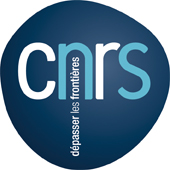Cognitive Biases
People involved
Evanthia Dimara, Inria and Sorbonne Université
Steve Franconeri, Northwestern University
Catherine Plaisant, University of Maryland, and Inria Chair, associated with the Inria Foundation
Anastasia Bezerianos, University Paris-Sud & CNRS (LRI), Inria, and University Paris-Saclay
Pierre Dragicevic, Inria, and University Paris-Saclay

Abstract
Information visualization designers strive to design data displays that allow for efficient exploration, analysis, and communication of patterns in data, leading to informed decisions. Unfortunately, human judgment and decision making are imperfect and often plagued by cognitive biases. There is limited empirical research documenting how these biases affect visual data analysis activities. Existing taxonomies are organized by cognitive theories that are hard to associate with visualization tasks. Based on a survey of the literature we propose a task-based taxonomy of 154 cognitive biases organized in 7 main categories. We hope the taxonomy will help visualization researchers relate their design to the corresponding possible biases, and lead to new research that detects and addresses biased judgment and decision making in data visualization.
Project description

Overview of 154 cognitive biases organized by experimental task. Dots represent the different cognitive biases.
Dimara et al. 2019

Our taxonomy organized by the flavors. Each dot is a cognitive bias. Colors encode task category (BLUE:ESTIMATION , RED:DECISION , DARK GREEN:HYPOTHESIS
ASSESSMENT , LIGHT GREEN: CAUSAL ATTRIBUTION , PINK:RECALL
, LIGHT ORANGE: OPINION REPORTING , and DARK ORANGE: OTHER ).


